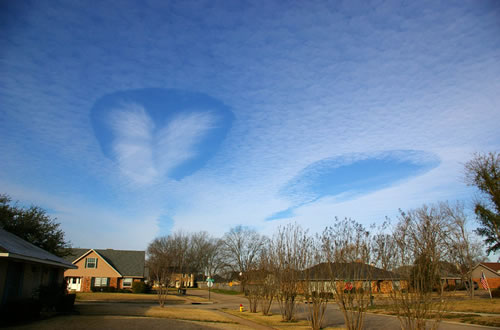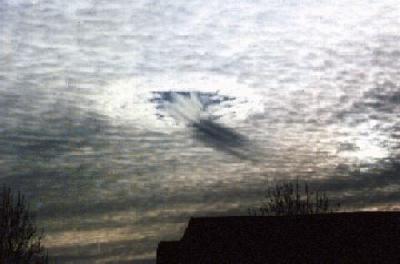
P. Wesley Tyler, Jr. captured this spooky image. What you’re looking at a hole-punch cloud:
Hole-punch clouds are miniature snowstorms that can occur in thin, subfreezing cloud layers.
The lack of fine particles, such as dust, in the clouds means water droplets have little to condense around, so they don’t turn to ice until the cloud hits about minus 38 degrees Fahrenheit (minus 36 degrees Celsius).
“Basically, the water molecules become sluggish enough at this temperature to form their own cluster of ice that produces an ice crystal spontaneously,” according to ice microphysicist Andrew Heymsfield.
***

Hole-punch clouds or fall-streak holes, such as the ones shown above near Shreveport, Louisiana, are caused by falling ice crystals. The ice crystals could originate in a higher cloud or be facilitated by a passing airplane exhaust. If the air has just the right temperature and moisture content, the crystals will absorb vapor as they fall and thus continue to grow. Holes are formed when supercooled water droplets in shallow cloud layers freeze (initiated by the falling ice crystals) and release their heat of fusion, which warms the air and evaporates the surrounding cloud. The fibrous, icy wisps falling from the clouds are called fall-streaks (seen above at left in the shape of a butterfly)
***

Photo Credit: Charles Jackson
Earth Science Picture of the Day has more info.

No comments:
Post a Comment